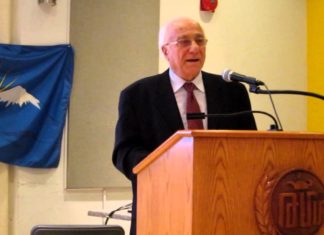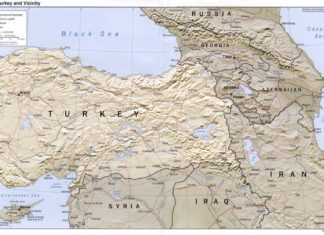By Hayk Demoyan
I was following an interesting scene on board a plane flying from Yerevan to Paris while heading to Boston in the middle of August. A young mother of three was trying to convince her children to read Movses Khorenatsi’s History of Armenia, which remained half read. It was exactly the same edition of 1968 I had read when I was 14 years old. Despite her attempts, the youngsters sitting in front of me rejected the book, preferring their iphones and tablets.
Surprisingly enough, ten days after that flight, I came across another reference to Khorenatsi. In his speech at the graduation ceremony of military educational institutions, on August 28 President Serzh Sargsyan reaffirmed the well-known aphorism of Khorenatsi, who in the beginning of his History of Armenia stated that we Armenians are “small in number and vulnerable.” At the same time, he added a reservation, declaring, “…Yes, we are small, yet powerful, strong with the unified characteristics of a powerful nation and family…”
Maybe not all, but many know well that the fifth-century situation of the Armenians is described in somber tones at the end of Khorenatsi’s pious work, a section which was still awaiting the attention of the mother and her children on board of the plane. This section is the lamentation of Khorenatsi concerning Armenian reality shortly after the loss of statehood and the end of the Arshakuni dynasty. The founding father of Armenian historiography gave a condensed description of the situation of the Armenian state and Armenian people, which simply could be described as a definition of the national crisis.
The remains of the Arshakuni kings, as archeologists claim, were found and displayed quite recently in the Armenian village of Aghtsq unceremoniously in the presence of the former Speaker of the Parliament and other politicians. Here the bones of the Arshakuni kings were buried in the fourth century after they were taken back from the Persian army, shortly after the latter’s invasion of Armenia. Too much symbolism? Maybe. But is it a new sign for a new loss of statehood we must face? The sad reality is that as a nation we are divided now rather than united, and there is much proof and evidence to back this unwanted statement. I am not intending to be a 21st century Armenian historian who will write another lamentation on 21st century Armenian realities, but at the same time I cannot keep silent on what we have both in Armenia and Diaspora, different from the non-existent realities artificially created by the President’s speechwriters and those who feel comfortable with the situation we have currently.
The situation we have in Armenia and Diaspora relations could be labeled as a profound crisis on the elite level, which is an objective consequence of non-mature and dishonest relationships with no clear strategies and long-term action plans. There are many reasons to describe the existing situation as such, and there is no need to be an academician or to have skills in social sciences in order to understand the reasons and causes of that crisis.








